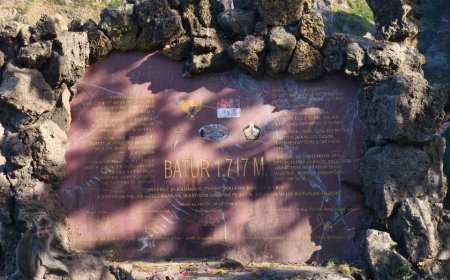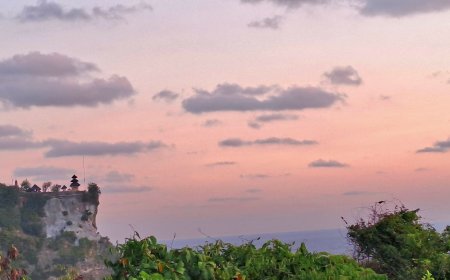Pura Dalem Kloping: Sacred Ancestral Temple of the Arya Kloping Family
Pura Dalem Keloping, located in Klungkung, Bali, is an important place of worship for the local community. Built by refugees as an expression of devotion to Ida Sanghyang Widi and their ancestors, this temple symbolizes a rich cultural and historical heritage. Its main building is adorned with traditional Balinese carvings and balance symbols, such as the poleng cloth. The temple also serves as a strategic location for religious ceremonies and community traditions.

During the reign of King Gelgel Dlem Waturenggong, numerous intrigues occurred within the government. There was a belief among the descendants of Arya Kepakisan that they, as the descendants of Kshatriyas, had a greater right to rule than the descendants of Sri Aji Kresna Kepakisan, a king from a Brahmana lineage. Such sentiments likely arose during times when the capital's situation experienced degradation, political turmoil, and scandals involving romantic relationships.
If the Gelgel kings neglected the welfare of their people and became involved in scandals that contradicted the norms of Kshatriya life, a call would arise within the heirs of Arya Kepakisan to rise up and lead a rebellion to defend their dignity. The desire of I Dewa Anggungan to gain power, combined with the interests of I Gusti Agung Batan Jeruk, led to a revolt against the king.

Entrance to Dalem Keloping Temple (Photo Source: Private Collection)
After the rebellion of I Gusti Batan Jeruk was suppressed by the forces loyal to Dalem, the relatives of Kiyai Keloping fled in uncertain directions. Some sought refuge in Karangasem, while others hid around the foothills west of Dawan village, east of Gunaksa village, and east of Pesinggahan village, Klungkung Regency. Among those who fled were the relatives of Kiyai Petandakan, Kiyai Pelangan, Kiyai Keloping, Kiyai Cacaran, and Kiyai Anggan.
For over 20 years of hiding in the vicinity of the foothills, they did not forget Ida Sanghyang Widi and their Holy Ancestors. As an expression of devotion, they built Pura Dalem Keloping.
Pura Dalem Keloping is located on Jl. Raya Babung, Gunaksa, Dawan District, Klungkung Regency, Bali. This temple is one of the important temples for the Balinese people, especially in the Klungkung area, serving as a place of worship for the ancestors of the Keloping family. Its strategic location along the Babung main road makes it easily accessible for Hindus wishing to conduct prayers or traditional ceremonies at this site.

Pajenengan Monument at Dalem Keloping Temple (Photo Source: Private Collection)
The main Pajenengan monument of the temple is dominated by red brick and adorned with intricate and artistic Balinese carvings. This building serves as the main place for worship and devotion at Pura Dalem Keloping. Leading to the main building, there is a staircase decorated with carvings of a naga or mystical creature, believed to be a symbol of protection and strength. The naga carvings are enhanced with golden details, showcasing the splendor and craftsmanship of local Balinese artists.
One of the statues or pillars beside the staircase is wrapped with poleng cloth (black-and-white checkered cloth), symbolizing the balance between opposing forces such as good and evil, as well as harmony in life. This poleng cloth is often used in temples as a symbol of spiritual protection. Additionally, there is a standing lamp that may be used for lighting during night ceremonies, adding a modern element to the temple complex. The ornaments on the roof and pillars of the main building also highlight the intricate beauty of traditional Balinese architecture, rich in symbolism.
Pura Dalem Keloping is a significant symbol for the Balinese community, particularly in the Klungkung area, serving not only as a place of worship but also reflecting a rich historical and cultural heritage. The construction of this temple is an expression of devotion and respect from the refugees to Ida Sanghyang Widi and their ancestors after experiencing turmoil in the history of governance.






























































